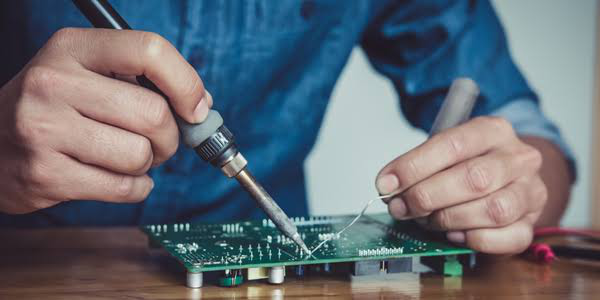Three Types Of Soldering You Should Know About
Oct 1st 2021

Soldering is useful in electronics manufacturing as it enables to join metal workpieces together. The process uses a soldering iron to melt the solder, a fusible alloy that helps join these components on the circuit board. Compared to other alloys, solder has a low melting point, but it still reaches 400° C or 752° Fahrenheit. The molten solder acts as a solvent; it dissolves metal from the surface of the pieces that you need to join. It then forms a bridge of alloys from one metal to another.
In the electronics industry, the IPC-A-610H is the most widely used electronics assembly acceptance standard. During the soldering process, you should follow these documented standards to form strong bonds between the various components and maintain consistency and reliability. Soldering is essential to the entire PCB fabrication and assembly process to create an essentially effective electrical connection. You can get training and certification in the IPC standards to learn about the various methods, tools, techniques involved in soldering. One of the essential things you should know is to distinguish and identify the different types of solder. This article further elaborates on the various types of solder.
Type Of Solder by Temperature
Soft soldering (90 °C – 450 °C)forms connections using the lowest filler metal melting point. These are usually alloys that melt around 400°C. Because low temperature is used in soft soldering, it can cause thermal stress on the printed circuit boards. It is not suitable for mechanical load-bearing applications, as the joints are not very strong.
Hard (silver) soldering (>450 °C):The bonding metal used is generally brass or silver. It forms a stronger connection than soft soldering. You can also use a blowtorch to strengthen the bonds.
Brazing (>450 °C):In this process, you do not melt the base metal but heat brazing rods or fillers to fuse them. The metals used have a much higher melting point.
Type Of Solder by Core
Acid Core Solder: It has a hollow core with an acid-based flux. The flux is aggressive and strong and helps eliminate the metal oxide layer that forms on the material surface. It also stops further oxidation from occurring. Cleaning the flux residue is very important.
Rosin Core Solder: The solder wire has a hollow core consisting of a milder flux made of rosin. It is used in electrical appliances. It prevents oxidation on the metal surface, and it can also chemically clean the metal itself. It also helps in enhancing mechanical strength and electrical contact of electrical joints.
Solid Core Solder: It uses a solid wire that contains the solder alloy or material. When using solid core solder, you need to apply the flux separately.
Types Of Solder by Alloy
Lead Alloy Solders: It generally consists of tin and lead mixed in the ratio of 60% tin and 40% lead. It has a low melting point, and the presence of tin improves the tensile strength and also the shear strength of the lead.
Lead-Free Solders: It has a higher melting point and does not consist of lead.
Flux-Core Solders: It consists of wires wound around a cylindrical device. The flux acts as a reducing agent. It helps in removing the oxidized layer formed metal surface that can otherwise cause corrosion.
To Conclude:
You need to consider various factors to choose the right type of solder. Consider your project requirements and objectives to select the right solder type to attain satisfactory quality of the outcome.
